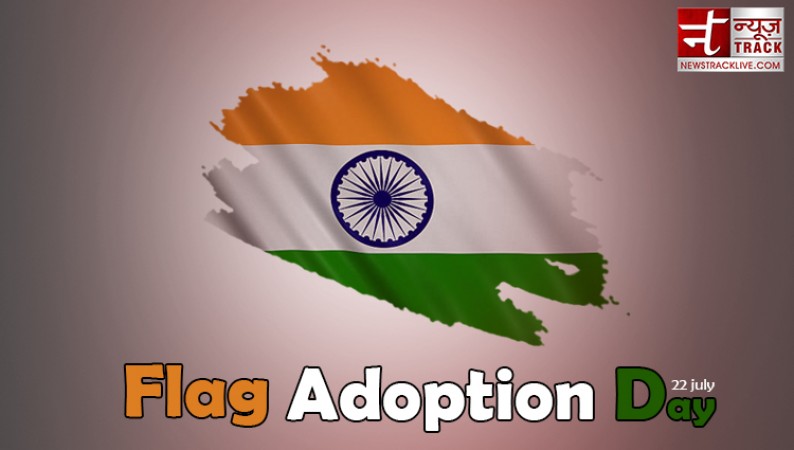
Today is a very important day in history for the Indian nation. No matter how many we may be in colour, form, or dress, but when we stand under the tricolour, we are one, we are Indians. Today is the day of the adoption of tricolour, the pride of same India. At the meeting of the Constituent Assembly of India on July 22, 1947, it was decided to adopt the tricolour as the national flag, which took place just days before India's independence from the British on August 15, 1947.
History of the National Flag: The National Flag has gone through many changes in the beginning. Many different flags have also been used amidst the national struggle for independence. The development of the Indian national flag has gone through many stages to reach this form. The first national flag was hoisted on 7th August 1906 at Parsi Bagan Chowk (Green Park), Calcutta (Kolkata). This flag was made from horizontal stripes of red, yellow and green.
The lotus remained on the yellow strip: The second flag was hoisted by Madame Cama in Paris and by some of the revolutionaries who had been exiled with her in 1907. It also looked similar to the first flag, but the seven stars on its uppermost strip represent the Saptarishi. The flag was also displayed at the Socialist Conference in Berlin.
The third flag came in 1917 when our political struggle took a definite turn. Dr Annie Bessant and Lokmanya Tilak hoisted it amidst the domestic government movement. The Congress session was held in Bejwada (present-day Vijayawada), where youth from Andhra Pradesh, Pingali Venkaiah, made a flag. It is the two colours red and green which are also representing the two major communities, i.e., Hindu and Muslim. Gandhiji suggested that in order to represent the rest of the community of India, it was necessary to have a white stripe and a moving charkha to signal the progress of the nation.
1931 proved to be a memorable year in the history of the flag. A resolution was passed for the adoption of the tricolour flag as the national flag. The flag, which is the ancestor of the present-day form, was accompanied by saffron, white and charkha in the middle. It was clearly stated that it had no communal significance and was going to be explained as follows. On July 22, 1947, the Constituent Assembly adopted it as the national flag of the free Indians. After independence, its colour and its importance remained. Only in the place of the charkha, the dharma chakra of Emperor Ashoka was shown.
At present, the upper stripe of the national flag of India has a saffron colour which shows the strength and courage of the country. The white stripe in the middle is a symbol of peace and truth along the Dharma Chakra. The lower green stripe shows greenery, fertility, growth and sanctity of the land.
List of Best Website Design Companies in India
Cabinet approval to MoU with Maldives on judicial cooperation
Chess Day: PM wishes Indian contingent for Commonwealth Games